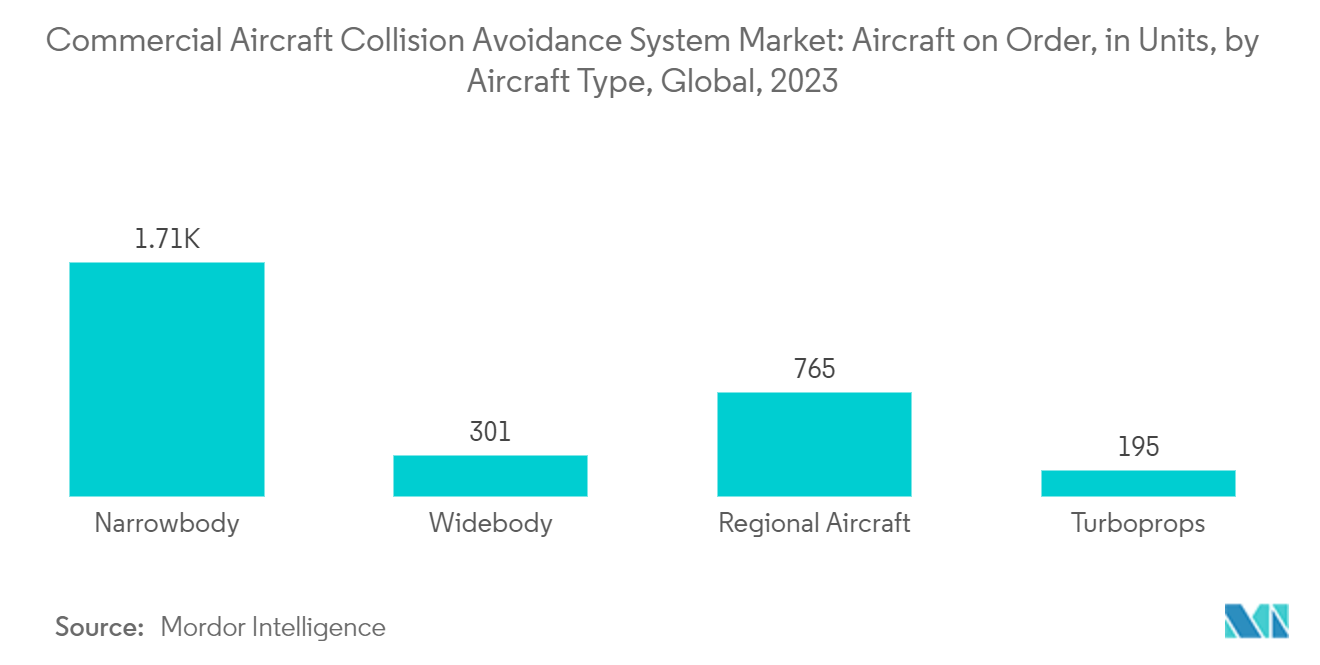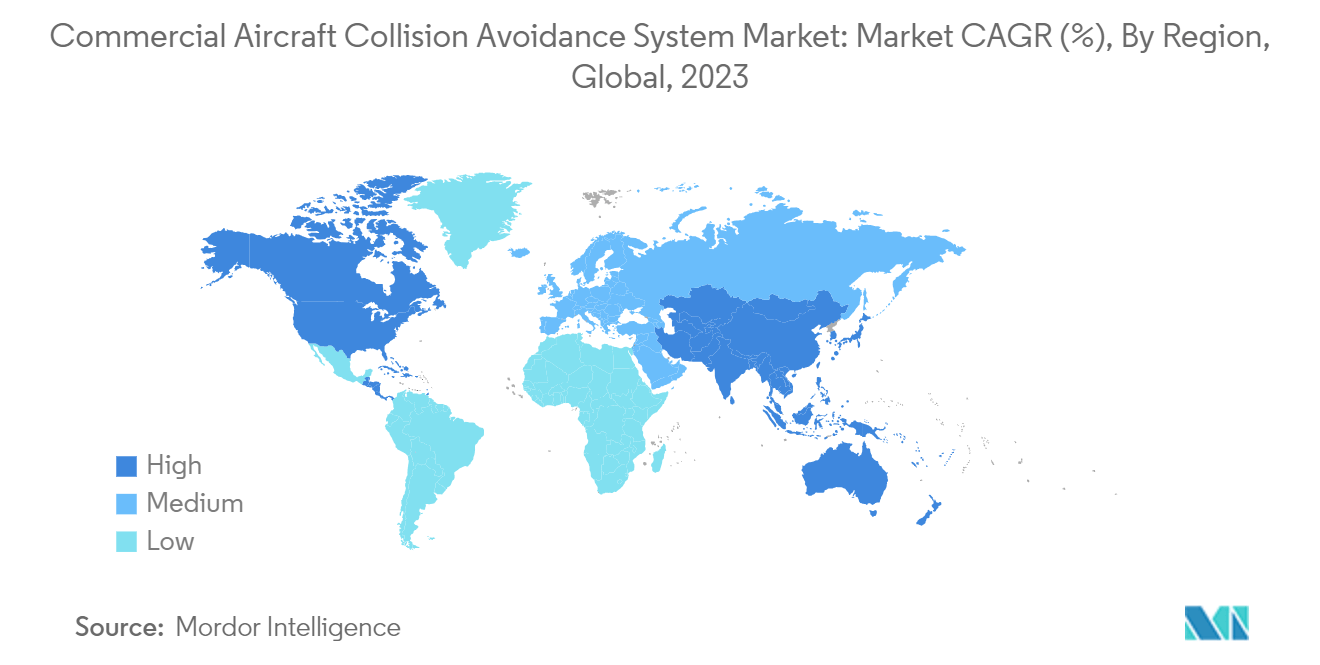Market Trends of Commercial Aircraft Collision Avoidance System Industry
The Narrow-body Aircraft Segment Projected to Showcase Highest Growth During the Forecast Period
The demand for narrow-body aircraft has surged in recent years, propelled by airlines and heightened deliveries from industry giants Airbus and Boeing. In 2023, Airbus and Boeing delivered 639 and 396 narrow-body planes, respectively. Additionally, the rise of the low-cost carrier (LCC) model has further fueled air passenger traffic. LCCs, focusing on cost efficiency, often opt for a single aircraft type, typically narrow-body, to keep operational costs in check. This strategy, coupled with competitive pricing, aims to boost revenue by attracting more passengers.
Highlighting this trend, in June 2023, IndiGo made headlines with a monumental order for 500 units of Airbus A320’s family of narrow-body aircraft slated for delivery between 2030 and 2035. The order includes A320 NEO, A321 NEO, and A321XLR models. Such procurement contracts, alongside the escalating demand, are set to drive the narrow-body aircraft segment's growth over the coming years.

North America to Dominate the Market During the Forecast Period
North America is poised for significant growth in the commercial aircraft collision avoidance system market in the upcoming years. This surge is primarily attributed to North America boasting the world's largest commercial aircraft fleet and the robust aviation industry in major regional countries such as the United States.
The US aerospace industry, bolstered by a mature landscape and robust infrastructure, is further fortified by the vigilant oversight of the Federal Aviation Administration (FAA). The FAA plays a pivotal role in setting and updating civil and commercial aviation regulations, mandating safety measures like the integration of Collision Avoidance Systems (CAS) on all aircraft operating in US airspace.
Rising air traffic has led to heightened aircraft procurement by regional and international airlines. Notably, Boeing, a prominent US-based aircraft OEM, drives substantial demand for collision avoidance systems. As OEMs like Boeing secure new aircraft orders, a parallel market for collision avoidance systems emerges, given the FAA's mandate for their installation on all active aircraft. This dual impetus – a heightened focus on passenger safety and stringent FAA regulations – propels the market's growth in the region.


